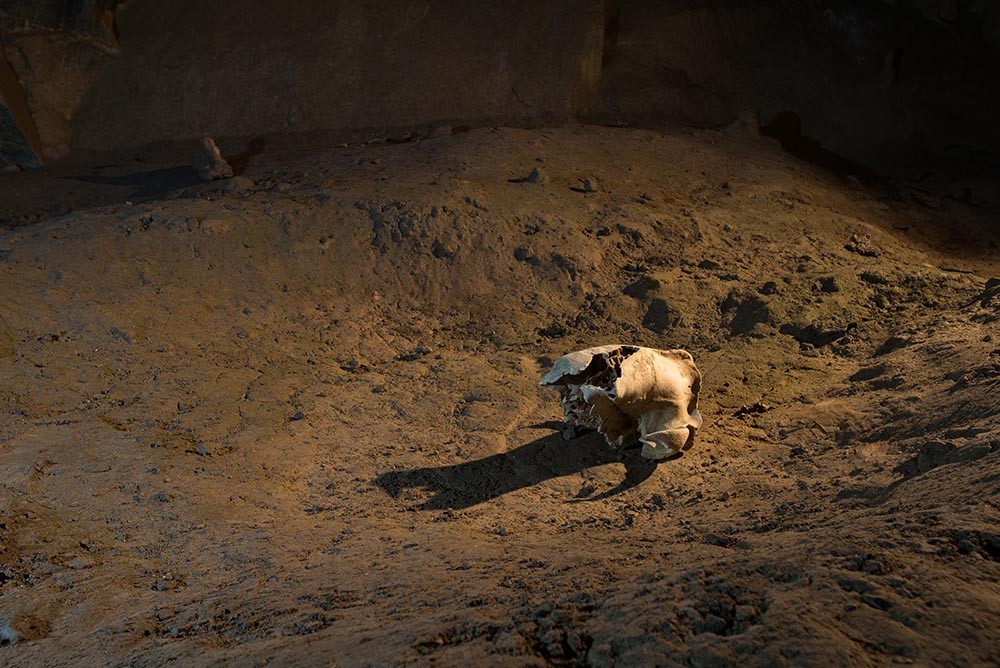
Radiocarbon dating has confirmed that the skull of a brown bear discovered in a County Clare cave in 1976 is over 10,400 years old.
New analysis of the skull, first discovered in Aillwee Cave in 1976, has determined that the remains date from Ireland’s Stone Age.
The research led by Dr Marion Dowd, Lecturer in Prehistoric Archaeology at the Centre of Environmental Research Innovation and Sustainability (CERIS), at IT Sligo, has also determined that the collection of bones consist of two bears – not one as originally believed.
The findings are the culmination of a re-analysis of over 450 bones originally collected from Aillwee Cave 42 years ago during development work to open the site as a tourist attraction.
For years it was believed that only one bear was represented in the remains from Aillwee Cave but radiocarbon dating, carried out by the Chrono Centre at Queen’s University, Belfast, has uncovered the presence of two different bears.
“To discover that this small assemblage of bear bones represented two bears instead of one is an unexpected bonus,” says Dr Marion Dowd, archaeologist at IT Sligo and project leader.
Radiocarbon dating of the bear skull from Aillwee has revealed it is 10,400 years old and dates to the Early Mesolithic (Stone Age). Ireland’s human population at this time was very low with probably fewer than 1,000 people living on the island. They would have been nomadic hunter gatherers who moved about the landscape in search of food resources, which at the time ranged from wild pig to salmon, eel and hazelnuts.
The research team working on the project for the past six months included Dr Ruth Carden, Research Fellow at UCD, who analysed the animal bones; and Sheila Hamilton-Dyer, Bournemouth University, who examined the bird bones.
Aillwee Cave, located in the Burren, County Clare, is one of the country’s oldest caves, and is among the premier tourism attractions in the west of Ireland. The bear bone display has been an integral part of the tourist trail at the site.

Nuala Mulqueeney, a Director of Aillwee Cave, says the new information about the age of the bear bone fragments is exciting.
“It is wonderful to finally know how old our brown bear bones are. Over the years there have been many differing schools of thought about the age. But to discover now that we have remains of two bears, one of which is over 10,000 years old, is really significant.”
The presence of a second bear amongst the remains was confirmed using radiocarbon dating. A bear tibia (leg bone) from Aillwee has been dated to the late Neolithic period, and is approximately 4,600 years old. The bone came from an adult bear and the presence of a chop-mark suggests the bear carcass was butchered by humans.
“Brown bear roamed the prehistoric Irish landscape for thousands of years, only becoming extinct here during the Bronze Age around 1,000BC. We have little evidence of direct contact between humans and bears, but the Neolithic butchered bear bone from Aillwee suggests the possibility that bear was occasionally hunted, or at least that bears that died by natural causes were exploited for their valuable furs, skins, fat and meat” said Dr. Dowd.
It was during the Neolithic period that megalithic monuments such as the Newgrange passage tomb were built.
Since their discovery in 1976, the bear remains at Aillwee Cave have been viewed by approximately five million visitors. Nicky Johnson, one of the Cave’s Directors, says this new information about the bones will add greatly to the visitor experience.
“We are eager to share these new dates and educational information with all our visitors to Aillwee. We are so grateful to Dr Marion Dowd and her team for advising and assisting us in bringing this project to fruition.”
This new bear bone analysis is the latest in a series of groundbreaking research projects led by Dr Dowd at IT Sligo in recent years. She is best known for her book, The Archaeology of Caves in Ireland, which won Book of the Year at the 2016 Current Archaeology Awards in London.
The same year, Dowd, along with animal bone specialist, Dr Ruth Carden, published their findings from analysis of a butchered bear bone that had been discovered in a cave in County Clare more than a century ago (1903). Using radiocarbon dating, they established that the bone dated to 10,500BC. The findings prompted Irish archaeologists to push back the date of the first human occupation of Ireland by 2,500 years. Prior to this, the oldest evidence of human habitation dated to 8,000BC.